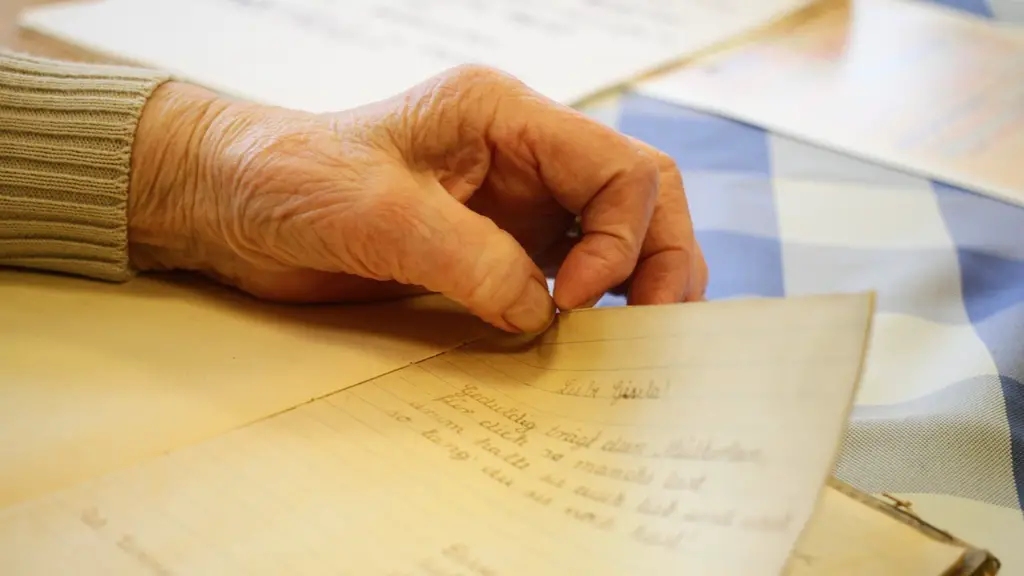William Blake was an English poet, painter, and printmaker. Active in the Romantic era, Blake is regarded as a key figure in the development of both the poetry and visual art of the period. His work often enlisted the help of relief etching, in which the artist works on metal plates that have been coated with an acid-resistant substance. The plates are then etched with lines that can hold ink, and the ink is transferred to paper to create the image. Because relief etching is a labor-intensive process, Blake often created only a small number of each print.
The Lamb is a poem from Blake’s collection Songs of Innocence, which was first published in 1789. The poem is about a lamb that is questioned by a child, who asks it various questions about its life and behavior. The child ultimately concludes that the lamb is a symbol of Christ.
There are a number of possible reasons why William Blake wrote “The Lamb.” One possibility is that he was inspired by the innocence and simplicity of lambs, which he saw as a symbol of God’s pure love. Additionally, Blake may have been trying to contrast the innocent lambs with the cruel treatment that they often receive at the hands of humans. Alternatively, some scholars believe that “The Lamb” is actually a self-portrait of Blake himself, in which he is exploring his own feelings of innocence and naivete.
Why did William Blake wrote the lamb?
The Lamb is a beautiful poem that celebrates all of God’s creation. The lamb is seen as a symbol for all of God’s works, and the poem expresses thanks for its existence. The poem is a reminder of the beauty and wonder of God’s creation, and it is a blessing to all who read it.
“The Lamb” is a short poem by William Blake, published in his collection Songs of Innocence in 1789. The poem is about a lamb, which symbolizes the innocence of Christ. The lamb is also a symbol of the natural world, which is created by God.
Why did Blake write the lamb and the Tyger
The lamb is a symbol of innocence, while the tiger is a symbol of power. The author is using these two animals to contrast the nature of humanity. Children are innocent and pure when they are first born, but as they grow older they become more tainted and resentful. This is because they are exposed to the harsh realities of the world and they learn to be more guarded and protective of themselves.
Blake’s dual symbol of the Lamb and the Tiger is one of his most famous symbols. The Lamb represents innocence and the child-like figure of the poet, while the Tiger represents the creative energy and power of human life. The Tiger aspires to a perfect, geometric form, while the Lamb is content in its innocence.
Who is the real focus of the poem the lamb?
The poem is about Christianity and the lamb is a frequently used name of Jesus Christ.
It is concluded with a benediction: “Little Lamb God bless thee / Little Lamb God bless thee.”
What is the difference between The Tyger and The Lamb?
The difference between the Lamb and the Tyger is that the Lamb is considered meek and mild, while the Tyger is considered to be fearful and dreadful. The Lamb is seen as a harmless animal, while the Tyger is seen as a powerful and dangerous creature.
The central metaphor in this poem is the comparison of a lamb with God. Blake uses the allusion technique to return to this metaphor in the final stanzas. The poem is about the innocence of a lamb and how it is representative of God.
What does the child in the lamb represent
The poet is like a child in that the child represents the power of imagination. A child is innocent; Christ became a child, and Christ was innocent like a lamb. The state of innocence coincides with childhood, with the freedom of the imagination, which represents God operating in the human soul.
The poem “We Real Cool” is about a group of young people who are trying to be cool. They are doing things that they think are cool, but they are actually putting themselves in danger. The theme of the poem is that it is important to be careful about the things you do in life. You might think you are cool, but you could end up getting hurt.
What lesson do you learn from lamb to the slaughter?
This story is a cautionary tale about making assumptions about people. Patrick assumes that his wife will passively accept their divorce, and he dies because of it. He underestimates her anger and willingness to take action. The moral of the story is to not make assumptions about people because you never know what they may be capable of.
While a tiger represents mystery and fear, a lamb symbolizes innocence and morality. Similarly to “The Tyger,” this poem focuses on the animal’s creator. The poet asks why the creator would make such different creatures, and wonders if there is a purpose to the contrast. The tiger and the lamb are both beautiful creatures, but they represent very different things. The tiger is a symbol of strength and power, while the lamb is a symbol of innocence and purity. The poet wonders if there is a reason for this contrast, or if it is just a coincidence.
What do The Lamb and the tiger symbolize in Blake’s poems
In the poems “The Lamb” and “The Tiger”, William Blake uses different materials to symbolize the two different aspects of life and creation. The lamb stands for innocence and simplicity, meekness and mildness while the tiger signifies strength and wildness, force and violence.
The first stanza’s tone is innocence and being naive because of the questions asked by the child. A child represents innocence and being naive so genuinely, the child wonders about the lamb. The second stanza’s tone is confident and proud because of his answers from his former questions.
What literary device is used in the lamb?
The poem is full of literary devices, which is one of the things that makes it so interesting to read. Alliteration, enjambment, and repetition are all used throughout, and they all help to create a unique atmosphere and tone. The poem would not be the same without these devices, and they are all used effectively to create a powerful and moving poem.
This poem is a beautiful reflection of the Bible’s teachings that God is our shepherd who watches over us. The imagery of the lamb and the shepherd is so peaceful and calming, and it really brings home the idea that we are all God’s creatures, loved and cared for by Him.
When trying to identify the author’s purpose in a poem, it is important to first identify the tone of the poem. Once you have determined the tone, read the poem using that tone/voice. Next, look at the words and phrases to see if the author is trying to Persuade, Inform, Entertain, or Share.
A poem’s core concept is the subject of the poem, or ‘what it’s about’ if you like. While many shy away from poetry being ‘about’ something, at the end of the day, as it was written, the poet had something in mind, and that something, whatever it was or may have been, is the central concept.
Conclusion
Blake wrote the lamb as part of a collection of poems called Songs of Innocence and of Experience. The lamb is meant to represent the innocence of childhood, while the tyger represents the experience of adulthood. Blake believed that childhood innocence was something to be treasured and defended.
William Blake wrote the lamb as a symbol of innocence and purity. The lamb is also a symbol of Christ, which is why Blake wrote this poem.





